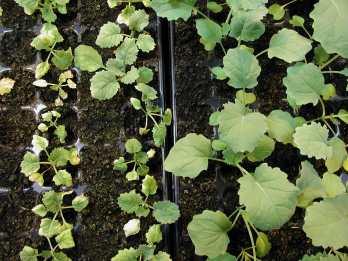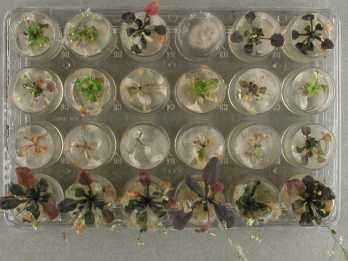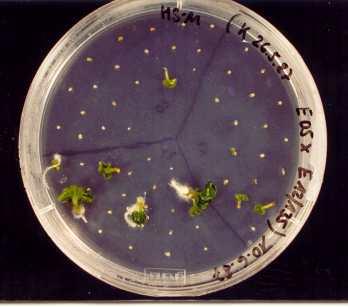Verticillum project
Verticillium wilt is of increasing importance for the crop. So far there are no satisfying sources of wilt resistance in oilseed rape.

Fig. 1: Typical stunting of B.napus seedlings after artificial inoculation with V. longisporum (2 rows on the left)
Our research project has recently started and pursues two approaches to generate wilt resistance in B.napus:
1. Transgenic ways to achieve resistance

Fig. 2: Arabidopsis is used as a model system to study transgenic approaches and also parameters of pathogenesis. Artificial infections can be made in multiwell plates. Here: Col-0 infected by V. longisporum; different spore densities were applied, top row to bottom:
- 1 conidio spore / well
- 10 conidio spores / well
- 100 conidio spores / well
- no V. longisporum spores
2. Interspecific transfer of resistance into B. napus

Fig. 3: Ovule culture is used to support interspecific hybridizations, in this case between B.rapa × B. oleracea.
Embryos derived from 3 pollinations germinate and develop into normal plantlets.


